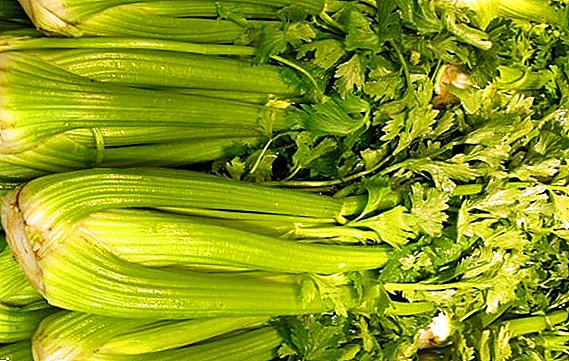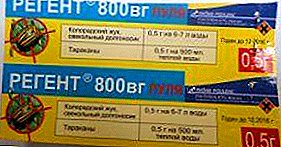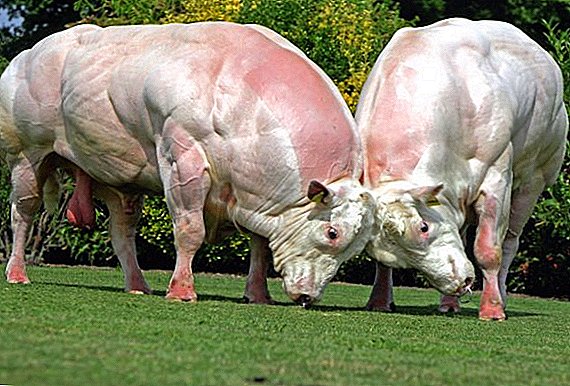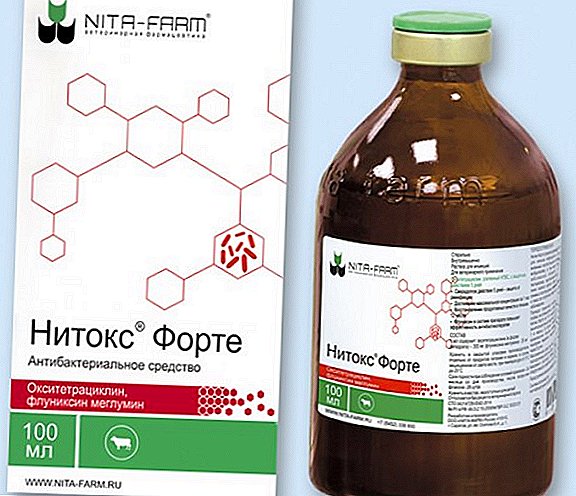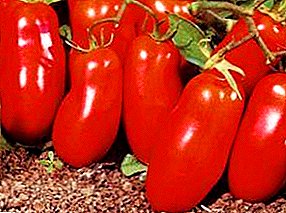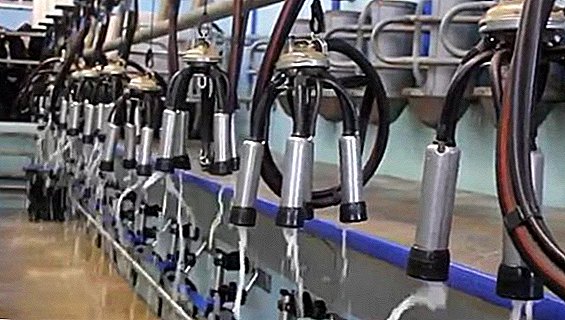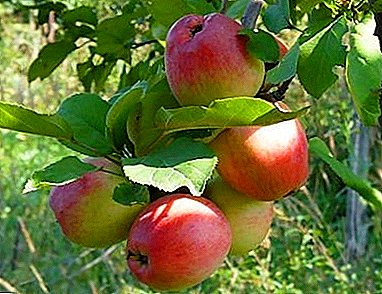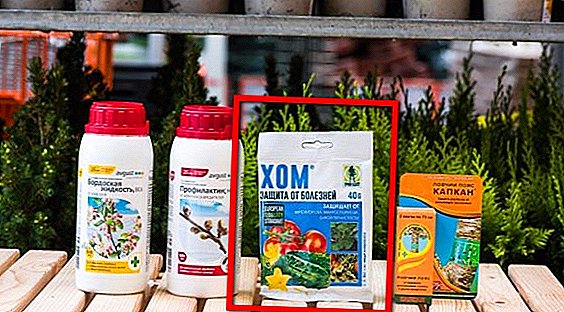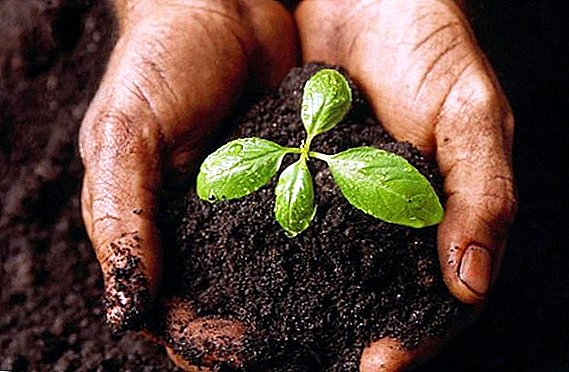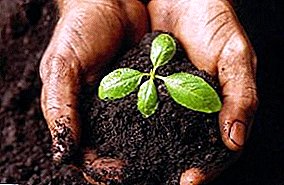 Many gardeners and gardeners, regardless of the cultivated crop, prefer organic fertilizers that can be obtained from animal waste or plant growing. Therefore, today we will talk about the scope of a biological fertilizer, discuss their positive and negative aspects.
Many gardeners and gardeners, regardless of the cultivated crop, prefer organic fertilizers that can be obtained from animal waste or plant growing. Therefore, today we will talk about the scope of a biological fertilizer, discuss their positive and negative aspects.
Manure
Let's start with fresh animal waste, which is used to feed certain plants. But before describing the use of manure, let's talk about its forms. 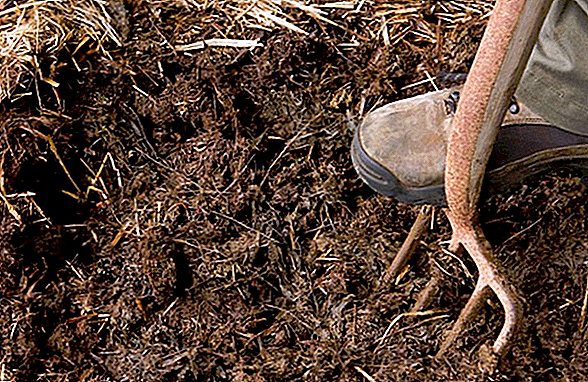
Manure types that are used for fertilizing agricultural crops:
- cow dung;
- horse dung;
- pork manure;
Cow dung. This type of manure is one of the most "popular", as it is used to fertilize most crops. The composition of manure includes the following elements: nitrogen (3.5 g), calcium (2.9 g), phosphorus (3 g), potassium (1.4 g). 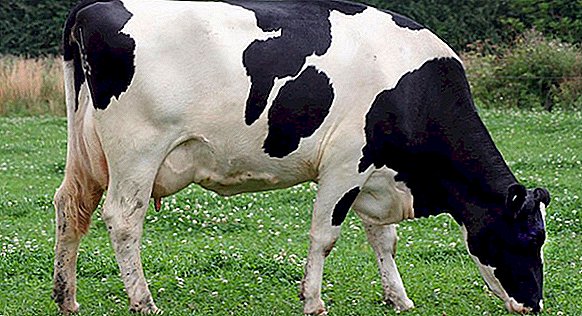
Despite its prevalence, cow dung is one of the most non-nutritious types of organic matter, therefore it is necessary to embed it in low fertility soil either in large quantities or in combination with other natural fertilizers.
Horse dung. In comparison with cow manure, horse is more nutritious and valuable, as it contains a greater number of useful elements that are used by plants in the process of their growth and development. 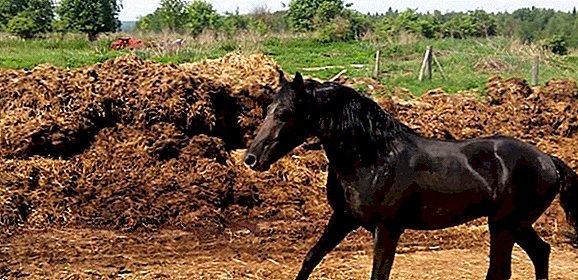
Composition: nitrogen (4.7 g), calcium (3.5 g), phosphorus (3.8 g), potassium (2 g).
Looking at the composition, you can see that the content of nitrogen, calcium and phosphorus is an order of magnitude higher than in cow dung, so it needs to be added less than mullein. Horse manure is used to fertilize the following crops: pumpkins, zucchini, potatoes, cucumbers, cabbage.
By fertilizing these very cultures, you will be able to increase their productivity by several times without introducing any chemistry. Also, due to the high heat transfer, this type of manure is embedded in greenhouses for heating beds.
We recommend reading the article on how to correctly apply organic manure from manure in your garden and vegetable garden.
Pig manure. Using pork manure to fertilize a plot is a great risk, as it is the most "pungent" type of fresh fertilizer. To understand the essence, look at the composition, which includes: nitrogen (8.13 g), calcium (7, 74 g), phosphorus (7.9), potassium (4.5 g). The nitrogen content in swine manure is almost 2 times higher than the content of this element in horse waste.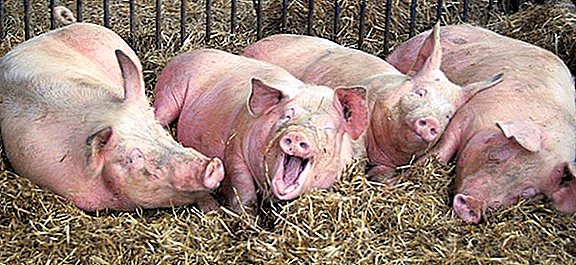
therefore improper use of pork faeces can destroy any vegetation in a fertilized area. Fresh pig manure can be used as a source of nitrogen, but even in this case it should be diluted with plenty of water, otherwise you will burn the roots of the plants.
Important! Pork manure can be used to oxidize the soil. It is worth noting that the not rotten wastes contain a large number of various parasites and weed seeds.
The use of manure as an organic fertilizer is strictly situational and is used only by experienced gardeners and gardeners. Since the composition of fresh waste includes a huge amount of nitrogen, weed seeds, worms and other parasites, the use of such fertilizers without composting or diluting is extremely dangerous. We do not recommend using fresh animal waste when growing any product.
Humus
Speaking about what organic fertilizers are, humus immediately comes to mind, which is the most popular type of natural fertilizer. 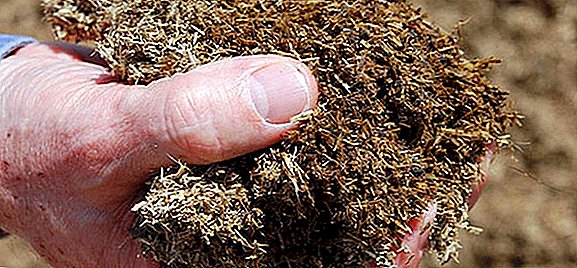
Humus - This is an organic fertilizer, which turns into fresh manure or plant residues after two years of rotting. This fertilizer has a minimum amount of moisture and the maximum amount of nutrients per unit mass.
That is, all the above types of manure or any plant residues after 2 years of maturation or composting turn into humus, in which there are no pathogens or bacteria, weed seeds or other threats to vegetation and humans. 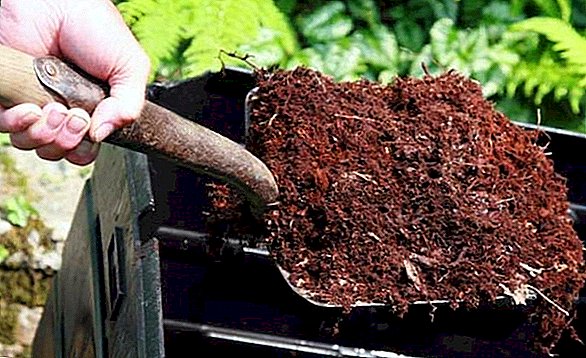
Humus not only increases the fertility of the soil, but also changes its structure for the better. It helps retain moisture in sandy soils and makes flowing heavy clay soils.
Positive sides of humus:
- suitable for any crops;
- non-toxic;
- improves the consistency of the soil;
- can be used at any time of the year;
- increases not only the productivity of fed crops, but also soil fertility;
- not dangerous for people and plants;
- can be used as a biofuel.
Negative sides of humus:
- the need to make a large volume per unit area;
- impressive price of natural fertilizer;
- the value and composition depends on the diet of animals from which humus is obtained (refers to the manure);
- when buying fresh manure, you must wait a very long time to get humus;
- the need to allocate a large area for the storage of fertilizers.
Thus, it turns out the following: to use humus is economically beneficial only if you grow cattle and use waste to fertilize your plot. If humus is purchased, then it is more profitable to use it to feed the most valuable crops that have a high cost or nutritional value.
Bird droppings
Describing organic fertilizers, their types and characteristics, it is impossible not to mention bird droppings, which even experienced gardeners or gardeners are unable to use. We will find out whether this waste can be used for a good cause, or it is better to dispose of it as far as possible from the landings. 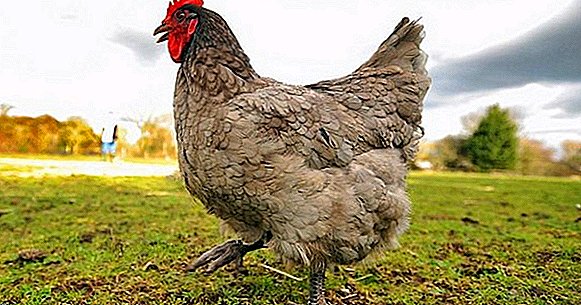
To understand the scope and the possibility of using bird droppings, we estimate its composition: nitrogen (16 g), phosphorus (15 g), potassium (9 g), calcium (24 g).
As you can see, bird droppings are 2 times more than “acidic” pig manure in terms of nitrogen content. You will say that if swine dung cannot be applied, then bird droppings are all the more dangerous for plants. However, everything is radically different. 
Important! Using fresh clean chicken manure is strictly prohibited.
In order not to scorch the roots of plants and properly dispose of bird waste, fresh litter can be laid on the compost or diluted for top dressing. You can also use chicken litter to fertilize fruit trees. However, this is only possible in cases where the litter contains a small amount of feces. 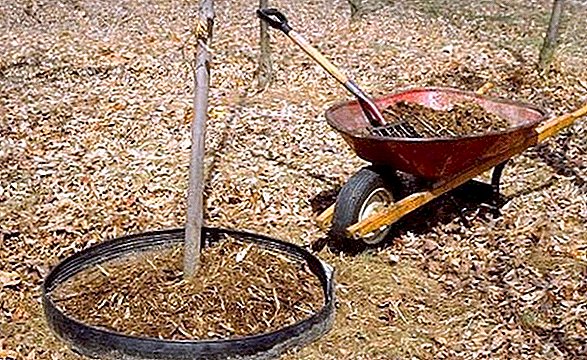
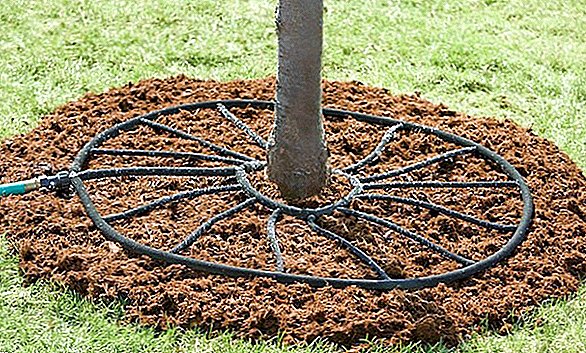
Learn also about how to properly maintain and use chicken droppings.
Positive sides:
- accelerates the ripening of fruits;
- increases yield;
- improves plant immunity;
- non-toxic;
- universal (can be used for most crops);
- valid for three years after entering into the ground.
Negative sides:
- improper use leads to the complete destruction of vegetation on the site;
- requires aging or dilution in water;
- overdose makes the soil unsuitable for planting for one year.
Following the above, it can be concluded that the use of bird dung is best for half of the composting. The nitrogen concentration decreases after several months of laying, which means that the fertilizer becomes safe to use. It is economically advantageous to use chicken droppings from private households, since the purchase may not justify the costs.
Rabbit droppings
Rabbit droppings - one of the best types of fresh organic fertilizers, since its consistency makes it easy to transport, and the absence of parasites and weed seeds makes such waste safe for humans and plants. 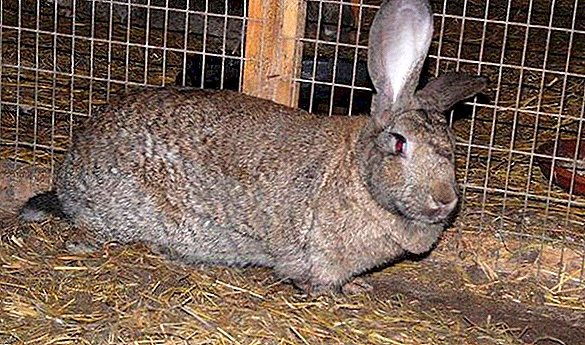
The composition of manure: nitrogen (6 g), potassium (6 g), calcium (4 g), magnesium (7 g).
Rabbit manure, unlike other types of fresh waste, can be started up on powder, since the amount of moisture is extremely small. The obtained bulk fertilizer is mixed with the ground (1/3 tablespoon per 1 kg of soil) and used as a substrate for indoor plants. Also, rabbit manure is suitable for fertilizing crops that need large amounts of magnesium, since previous types of manure do not have this element. 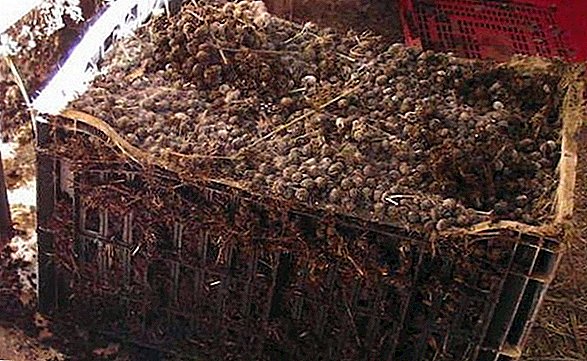
It is said that the introduction of fresh rabbit droppings into the soil will have the same effect on plants as any other manure - scorching the roots.
Important! If litter is exposed to negative temperatures, then all the nitrogen will evaporate from it and such fertilizer will lose the lion's share of its value. The same applies to boiling water steaming.
Since rabbit litter is not used in its pure form, it can be put up on compost or make water infusion. Such biological fertilizer is very valuable for agriculture. 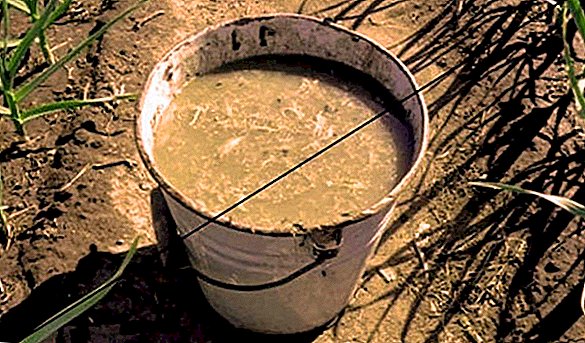
List the positive aspects of rabbit droppings.:
- convenient to transport;
- high biological value and rich composition;
- universality of top dressing;
- absence of pathogenic organisms and weed seeds.
Negative sides:
- excess fertilizer destroys vegetation in the area;
- the need for pre-treatment (composting, infusion);
- low yield of fertilizer and, accordingly, high cost;
- at drying half of useful substances is lost;
- fresh use is almost impossible.
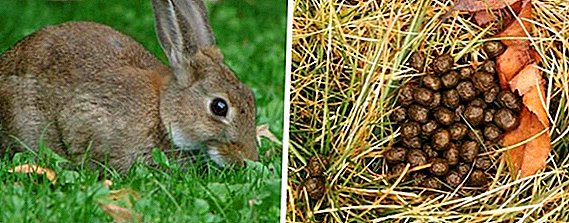
It turns out that using rabbit litter is effective only if you are breeding animals yourself or you can buy fertilizer at competitive prices. As is the case with other fresh manure, rabbit droppings are not suitable for embedding in the ground without additional aging (composting or infusion).
For people who have goats or sheep on their farm, they can also use their manure as fertilizer, as it is universal.
Compost
Compost is the second most popular fertilizer after humus, and the first in cost and ease of preparation. 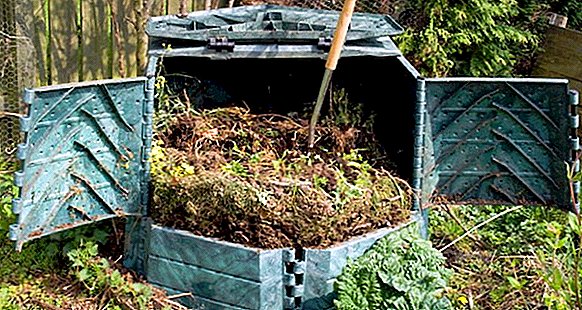
Compost is an organic fertilizer, but not everyone can answer the question what it is.
Compost - organic residues that have decomposed for some time under the influence of the external environment or any devices. For the preparation of compost, you can use any remnants of vegetation (including roots), manure, peat, foliage from trees, plant and animal human waste, unsuitable food, eggshells and even human faeces. 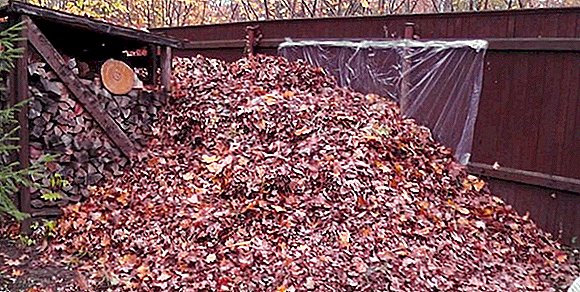
Read also about how to make a compost pit with your own hands.
Well-rotted compost is not inferior in quality and availability of useful substances by humus. Therefore, compost is applied in the same dosages as humus. You can use compost to fertilize absolutely any plants in the garden, in the garden or in the house.
Compost pluses:
- small time and resources;
- universality in application;
- no harmful organisms and weed seeds;
- low cost of fertilizer;
- any animal or plant residues are suitable as raw materials;
Compost cons:
- fertilizer value depends on raw materials;
- unpleasant odor in the process of decomposition of residues;
- a lot of space is needed to store the compost;
- per unit area it is necessary to use a large amount of fertilizer;
- purchased compost can have extremely low utility for plants.
Thus, compost can and should be used to fertilize the site, especially if you have a large amount of various biological waste accumulated daily.
Immature compost will most actively feed the plants for the next 2-3 months, so it is more effective to dig it under fruit trees (pear, apple, nut, etc.), fruit bushes (currants, grapes, raspberries, blackberries, honeysuckle) and vegetable beds.
However, we do not recommend buying compost, since you do not know which raw material was used to make it (for example, sewage sludge), therefore the declared value on the package may not be true.
Ash
It will be a question of wood ashes and that which is formed after burning of the vegetable remains from a site and manure. What can ash give us and how valuable is it? 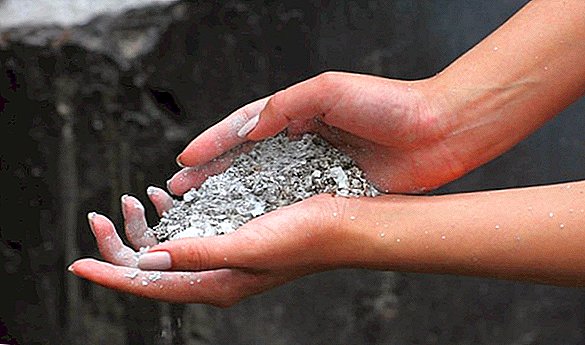
The composition of the ash, depending on the burnt raw materials, includes such elements: phosphorus, calcium, potassium, magnesium, sulfur, boron, manganese and others. It turns out that the ash, like the previous types of organic fertilizers, contains all the necessary compounds that contribute to increased yields and improved soils. 
Ash is used for fertilizer absolutely any vegetation on the plot, as it does not contain in large quantities any substances that can poison or "burn out" the plants. However, you should be careful when applying ash in areas with high alkalinity, as it can aggravate the situation.
Important! It is best to apply the ashes in a pair with "acidic" fertilizers, which are composed of nitrogen.
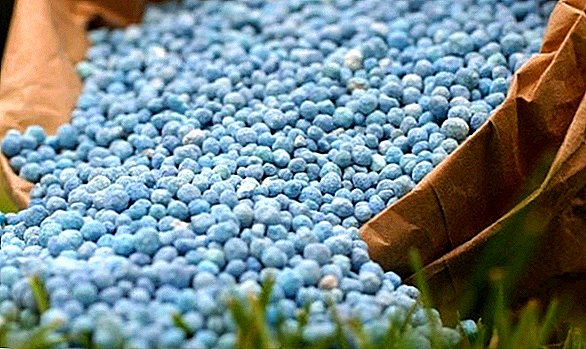
Fertilizers that contain nitrogen: urea, potassium nitrate, ammonium nitrate, azophoska, nitroammofoska, nitrophoska.
Positive sides:
- simple fertilizer preparation;
- the absence of any threat to the plant or person;
- low consumption per unit area;
- convenience in transportation and storage;
- no unpleasant odors;
- fertilizer versatility;
- The product does not require additional processing or exposure.
Negative sides:
- the usefulness of the ash depends on the raw materials being burned;
- Ash, in the form of fertilizer, is not suitable for crops that prefer acidic soil.
Ash is somewhat similar to compost, since its value depends on the raw materials used to produce the final product.
Since ash does not contain chlorine, it should first be applied to crops sensitive to chlorine, such as raspberries, red currants, strawberries, cucumbers, zucchini, lettuce, peas, potatoes.
If you yourself get the ash, burning waste residues, then this fertilizer has zero cost and is excellent for increasing yields and reducing the acidity of the soil.
Did you know? In the building materials industry, ash is used to produce certain types of concrete.
Peat
Peat - A popular fertilizer that is used to increase the yield of agricultural crops and feeding of indoor plants. In fact, these are decomposed compressed remains of plants or animals, and in the wild, a huge amount of peat is formed in the swamps, in conditions of high humidity and lack of oxygen. 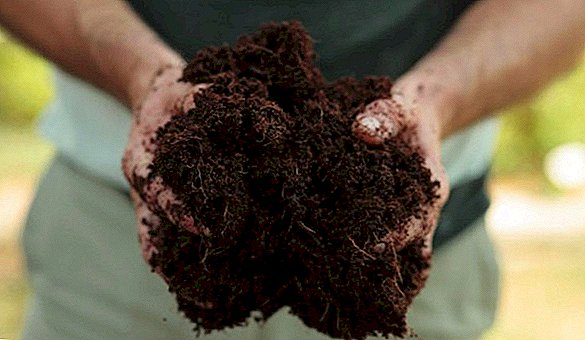
Peat contains such elements.: nitrogen, calcium, iron, fluorine, silicon, aluminum, manganese and others.
Peat, although it consists of more than a third of humus, can not be used in its pure form and in large quantities to increase the yield. All because this fertilizer is poor in nutrients. That is, for example, the presence of nutrients in fertilizer can be compared with the caloric content of food.
Food can contain a huge amount of useful elements, but its nutritional value, at the same time, can be extremely low. The same can be said about peat. Therefore, if you "plant" your crops exclusively on peat, then do not expect a noticeable increase in yield.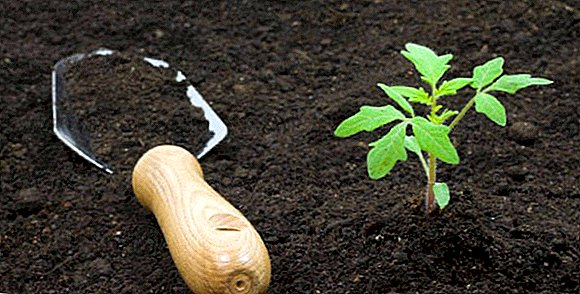
Fertilizers contain a huge amount of nitrogen, so in a large dosage the soil is strongly oxidized, which is worth remembering when they are embedded in the soil.
Advantages of peat:
- contains a huge number of micro and macro elements;
- easily transported and stored;
- does not pose a threat to humans or plants;
- peat can be obtained at home;
- can be used not only as a fertilizer, but also as fuel;
- loosens the soil, making it more flowing;
- suitable for most crops and houseplants.
Cons of peat:
- high price;
- strongly oxidizes the soil (when used in pure form);
- useless as a fertilizer for fertile soils;
- dry fertilizer is hard to soak for the release of the necessary elements;
- peat is used to fertilize plants on the site only in conjunction with other feedings.
Turns out that peat - situational fertilizer, which should be embedded in the soil in tandem with other nutrient supplements. Pure peat is used only for soil oxidation, which means that it requires less acidic additives (for example, ash), which can level the pH.
Did you know? Treated peat is used to absorb oil from the surface of the ocean or its coast, as well as for wastewater treatment.
In this video, describe how to make peat with your own hands.
Biohumus
Biohumus - This is the manure that has been processed by worms. That is, it is a waste of earthworm activity. 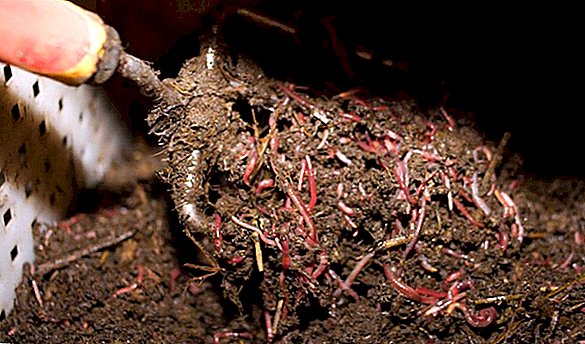
Biohumus is a little popular among "experienced" gardeners and gardeners, as it is more usual to use compost and humus, however, this fertilizer is just a storehouse of all sorts of useful elements and minerals.
Learn more about the benefits of earthworms in our garden and what role they play in creating humus.
In addition, vermicompost (liquid vermicompost) contains a large number of beneficial bacteria that strengthen the immune system of the plant and contribute to its development.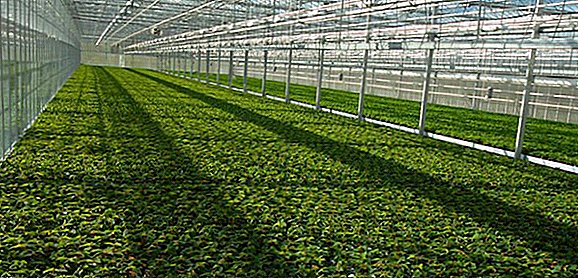
Fertilizer composition: nitrogen (20 g), phosphorus (20 g), potassium (15 g), calcium (up to 60 g), iron (up to 25 g), magnesium (up to 23 g), organic substances more than ½ of the total mass.
Unlike the fertilizers described above, biohumus is not only suitable for any soil and vegetable crops, but also represents a "concentrated black soil", which greatly increases the fertility of the soil. 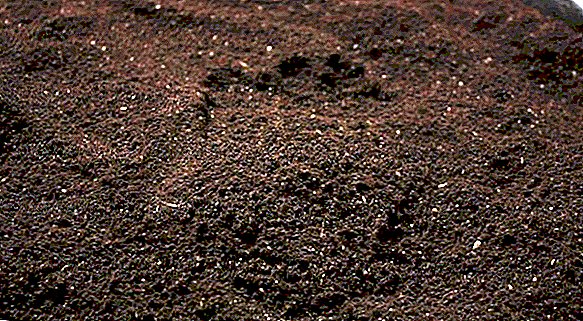
In order to realize the value of such a fertilizer, we present some illustrative figures. The introduction of 1 ton of manure increases the yield of grain by 11-12 kg per hectare, the introduction of the same mass of biohumus increases the yield by 130-180 kg. It’s hard to believe, but that’s what it is. In fact, you apply fertilizers that have higher productivity than the best black soil.
Positive sides:
- universality of use;
- no harmful organisms or weed seeds;
- source of beneficial microorganisms;
- non-toxic;
- satisfies all the needs of plants;
- does not wash out with water;
- can be obtained at home;
- overdose does not poison the soil (it is impossible to plant in clean biohumus).
Negative sides:
- very high price of purchased biohumus (about $ 350 per ton);
- it is impossible to “prepare” fertilizers at home without buying special worms;
- the process of formation of vermicompost takes a long time.
Turns out that vermicompost - the best fertilizer for any crops, if you do not take into account its price. If you have a lot of time and have an initial capital - it is worth starting a small production of an excellent fertilizer. 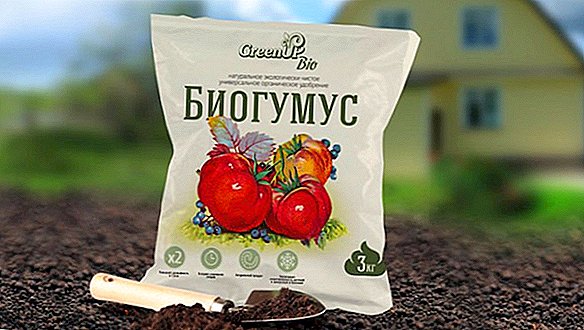
Read about how you can produce biohumus with your own hands.
If you are going to buy biohumus, then it is more profitable to feed only the most valuable crops that you are going to start up for sale. In any other case, the costs will not pay off, so before buying such a fertilizer, you should carefully consider everything.
Green manure (green fertilizer)
Siderata - These are plants that are grown for further embedding into the ground. Green manure enrich the soil with easily assimilable nitrogen and other trace elements.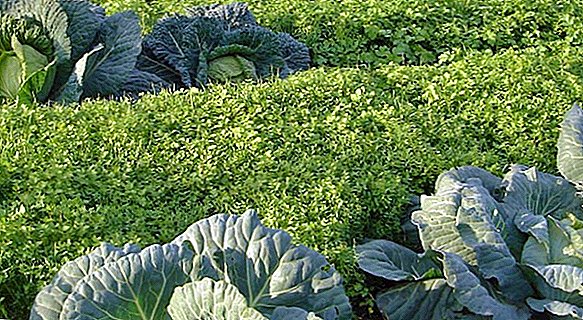
The siderata plants include: all legumes, mustard, rapeseed, "standard" cereals, phacelia, buckwheat. In total, about four hundred different cultures can play the role of siderats.
Planting sideratov will help improve the composition of the soil and increase the yield of your potatoes.
We plant, for example, peas. As soon as he gains the necessary green mass, we embed it in the ground and after a certain period of time we plant the main crops in this place. Peas decompose and supply our vegetation with nutrients.
Pros of using sideratov:
- no threat to plants or humans;
- no need to allocate space for storing fertilizer;
- universality of use;
- the presence of basic elements that are necessary for plants;
- overdose is impossible, because green mans do not rot "at the moment";
- recycling tops and other residues that are released;
- fertilizer does not poison the soil.
Cons of using sideratov:
- rotting lasts about two years, so there will be no immediate improvement in the soil;
- time and money spent on planting and growing sideratov;
- it is impossible to transport this type of fertilizer over long distances;
- siderats deplete the soil, accumulating nutrients;
- Green manure need to be used in tandem with other types of fertilizers to get the expected effect.
Turns out that planting green manure plants, although it does increase crop, but it requires additional costs from you, which may not justify themselves.
Depending on the choice of the crop that will serve as fertilizer, the usefulness of such a fertilizer varies, so it makes sense to embed the vegetation with which the crop was harvested (or at least part of it) in the ground to justify the money spent on seeds and watering.
Bone Meal (Bone Meal)
Bone flour - it is ground to a powdered state bones of cattle or fish. 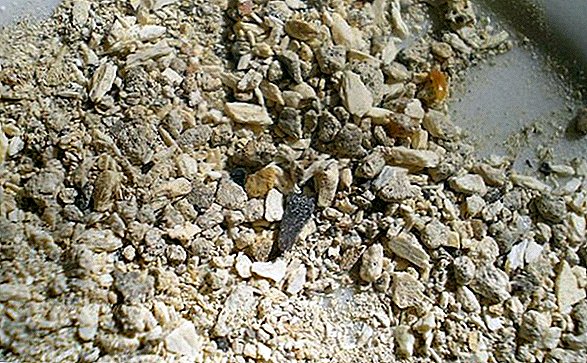
Let's talk about animal bone meal. This fertilizer is rich in phosphorus and calcium, so it perfectly fills the needs of plants in these elements. Also in the composition of bone meal includes many trace elements and biologically active substances that have a positive effect on the growth and development of crops.
Fish meal. The same free-flowing product, which is obtained by grinding and grinding the bones of different fish. This flour has a high nitrogen content, which is practically absent in the bone meal of livestock. In addition, the amount of phosphorus is much higher than in the bone meal of cattle. 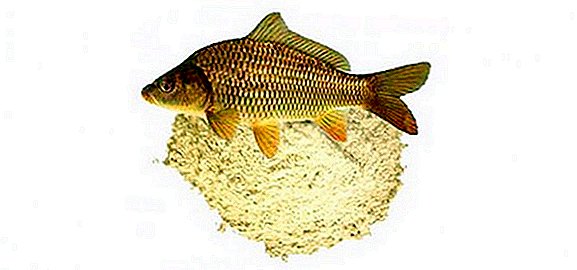
Important! In case of overdose, bone meal also acts as superphosphate, leading to rapid aging of plants and causes other side effects.
It is worth remembering that bone meal reduces the acidity of the soil, therefore, it should be used on alkaline soils with another oxidizing agent, which equalizes the pH level.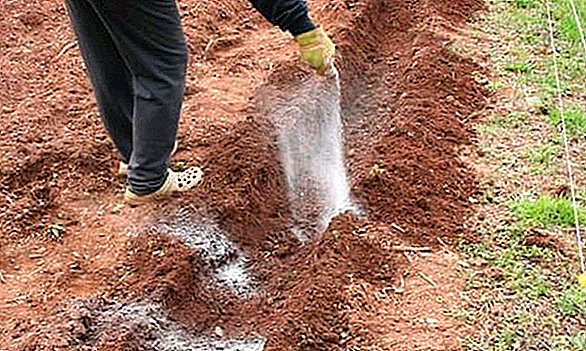
The positive side of bone meal:
- does not contain harmful impurities, harmful organisms and weed seeds;
- has a very low cost;
- with proper storage "shelf life" is not limited;
- has a prolonged effect, so the plants receive all the elements in small doses;
- suitable for any crops whose development depends on phosphorus and calcium;
- can be used to reduce the acidity of soils;
- easy to transport and store;
- does not have an unpleasant smell.
Negative sides of bone meal:
- difficult to cook at home;
- is not a complex fertilizer;
- if used improperly, you can increase the percentage of phosphorus in the soil several times and make it unsuitable for planting most crops.
Turns out that it is almost impossible to make bone meal at home, so this is an additional purchase. It makes sense to use such fertilizer only in combination with other organic fertilizers that contain small amounts of phosphorus and calcium. Use in its pure form will not work, and an overdose will leave you without a crop. 
Did you know? To make table sugar from cane sugar, cane stalks are crushed, separating the juice from the pulp. Juice is cleaned using bone char, which acts as a filter (raw materials are pelvic bones of calves and cows).
Sawdust
Sawdust, most often, are used for soil mulching, saving plants from strong temperature drops and weeds. Direct embedding of small sawdust in the ground will not only not give a positive result, but also lead to a deterioration in the quality of the soil, which is worth remembering. 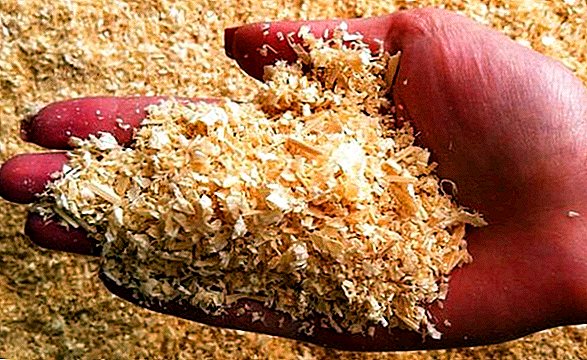
So how to use sawdust in the form of fertilizer? There are 3 options for their use: soil mulching, composting, mixing with manure / humus. 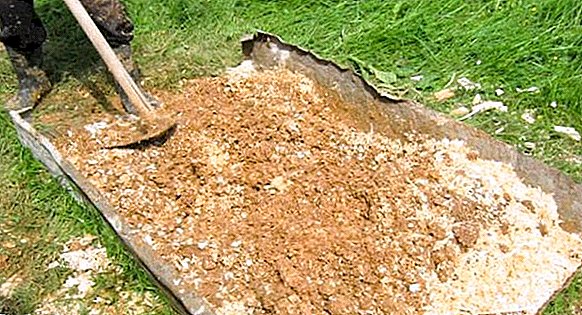
Important! It is necessary to mix fresh sawdust with fresh manure, because wood chips absorb so much nitrogen.
If you spent the soil mulching with sawdust, then for the first time they will perform only a protective function. Only after 3 years, when the processes of rotting pass, sawdust will feed the soil and give useful elements to the planted plants. 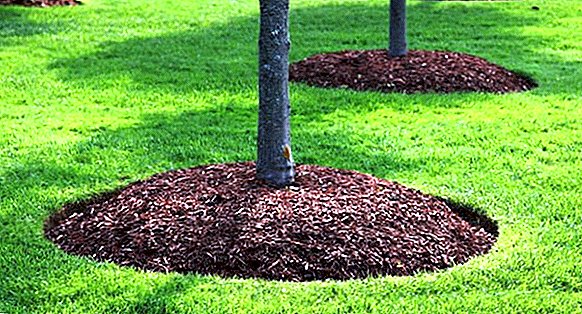
Composting Sawdust, like other plant residues, can be put on composting and in the future get good fertilizer. Mixing with humus or manure. This option is recommended to be used in greenhouses and hotbeds in order to quickly heat up the soil and make it looser.
The advantages of sawdust:
- perfectly loosen the soil;
- can be obtained at home;
- low cost of production;
- can be used as protection, which eventually turns into fertilizer;
- You can reduce the acidity of the soil or increase it using fresh or rotten sawdust;
- ease of transportation and storage;
- no smell.
Cons of sawdust:
- colossal period of complete rotting (up to 10 years);
- fresh sawdust can pull all the nitrogen out of the ground, and the rotted ones can oxidize the soil to such a state that only wormwood will grow on it;
- does not have high nutritional value for plants;
- commercial sawdust may have impurities of varnishes and paints that are toxic to plants.
Thus, sawdust is better to use as a "tread", which will eventually feed the crop, rather than as a full-value fertilizer.
If there is a large tonnage of fresh produce available, then it is better to put it on compost, in this case, you will quickly get full-value fertilizer.
Did you know? Alcohol, suitable for use, can be synthesized from sawdust.
Il
Il (sapropel) - plant and animal remains that accumulate at the bottom of rivers and lakes, like peat. 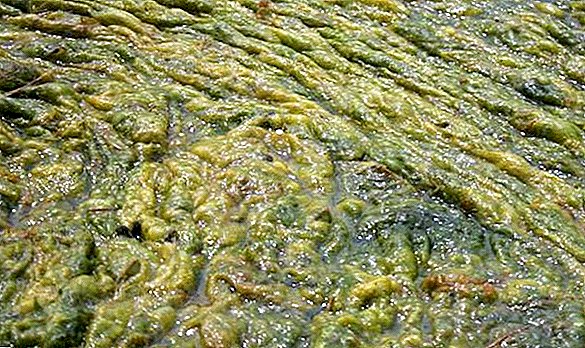
Dry sludge has the following composition: nitrogen (20 g), phosphorus (5 g), potassium (4 g). 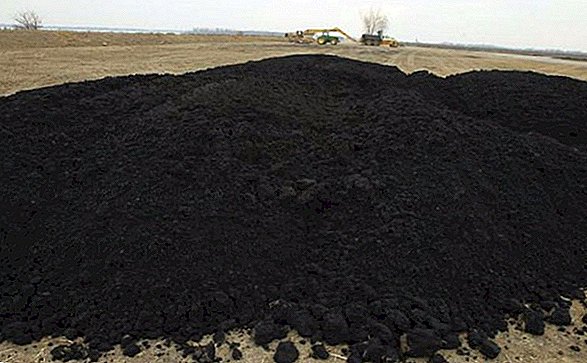
As you can see, the content of the basic elements of silt is not inferior to livestock waste. Such a fertilizer is valuable because it decomposes rapidly in the soil, like plant residues.
It is worth remembering that the sludge is applied on sandy soils, retaining moisture in the soil. Using silt on loamy soils, you need to be careful, as it impairs the air permeability and retains water. The best option would be to apply sludge together with other fertilizers that improve the flowability of the soil.
Positive sides:
- sludge, in the presence of basic elements, is not inferior to animal waste;
- can be used immediately after drying;
- quickly rotting in the ground;
- improves the structure of sandy soils;
- does not contain weed seeds;
- rich in biologically active substances.
Negative sides:
- sludge can be obtained only from reservoirs in which a weak current is observed;
- “fresh” sludge can seriously harm the plants, and therefore needs to be dried;
- A high nitrogen content increases the acidity of soils, therefore its use is limited to neutral and alkaline soils;
- sludge from a polluted pond can destroy vegetation in your area;
- The composition and value of the fertilizer depends on the reservoir from which the sludge was extracted.
It turns out that it makes sense to use sludge only if there is a lake or a river with a weak current nearby, as purchased sludge may contain a large amount of harmful substances (most reservoirs discharge sewage). If you decide to buy sludge, then compare the recommendations with the real indicators of your soil in order not to aggravate the situation.
Feces
The most unpopular article completes the niche fertilizers - human feces. Many gardeners and gardeners deliberately build outdoor toilets away from plantings, so as not to poison the soil, but even such fertilizer can benefit your plantings. 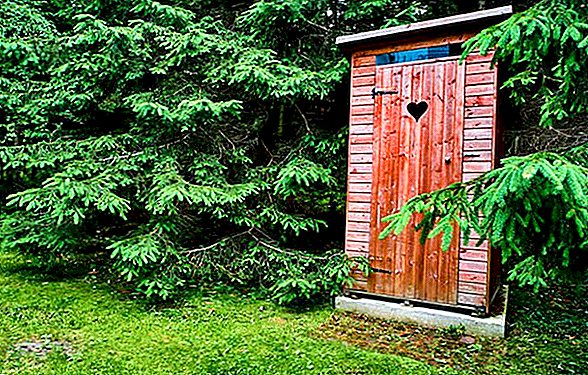
Let's start with the composition: nitrogen (up to 8 g), phosphorus (up to 4 g), potassium (3 g).
In fact, human faeces contain about the same concentration of basic elements as horse manure, with the exception of nitrogen. To use such fertilizers without harm to plants and humans, they need to be composted together with weakly decomposing organic residues (peat, sawdust). The minimum composting period is 3 months. The use of feces in its pure form is strictly prohibited, as they are the source of a huge number of pathogenic organisms that will harm you and the planted crops.
After minimum exposure, the faecal mixture should be kept in piles for about 18 months for complete disinfection.
The finished fertilizer is used as well as bedding manure. The rotted feces are more valuable to plants than animal waste.
Positive sides:
- emptying cesspools at no extra cost;
- relatively high value of the finished fertilizer;
- no costs;
- there is no need to worry about the lack of raw materials;
- no weed seeds.
Negative sides:
- unpleasant smell;
- long term "preparation" of high-grade fertilizer;
- it is necessary to allocate a lot of space for fecal rot;
- it is necessary to use additional additives (peat, straw, sawdust), without which the full rotting of the feces is impossible;
- the raw material is a breeding ground for harmful bacteria and microorganisms;
- purchasing raw materials is extremely problematic.
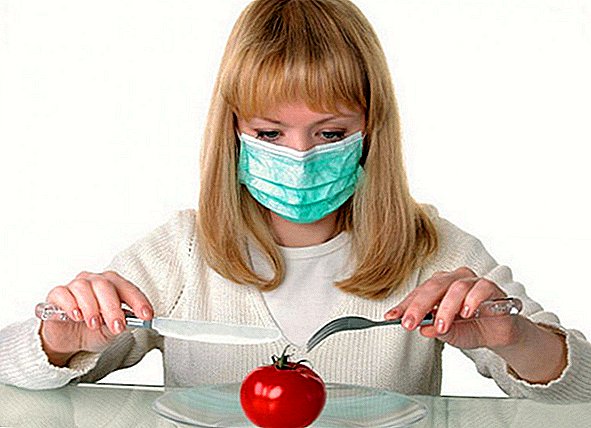
Following the above, we can conclude that although human feces can be used as fertilizer, the unpleasant smell and the long rotting process will scare away most gardeners and gardeners from such occupation. It is rational to use this type of fertilizer only if compost heaps can be placed at a great distance from residential buildings and industrial enterprises, since otherwise complaints from neighbors and outbreaks of various infections cannot be avoided.
We presented the main types of environmentally friendly fertilizers that can be used to increase yield, improve plant growth and development, increase soil fertility. Each fertilizer has its pros and cons, so you need to use only the most useful and affordable in terms of price.



